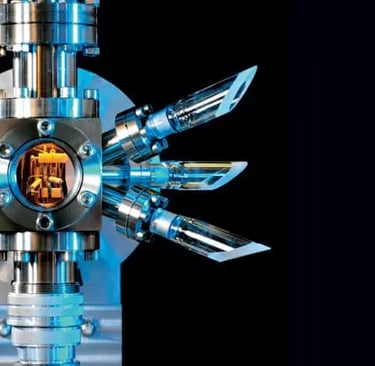Atomic Clock Precision⚛️✨Modern Timekeeping
Stories About Time: Measuring Moments Through History ⏳🌞🌕 from the chapter "Towards an Understanding of Linear Time" from the History Album. In this chapter we invite children to a journey through the fascinating evolution of timekeeping. Starting with observing the Sun🌞, and people who first noticed the movement of shadows to mark the day, to the people who noticed the phrases of the Moon 🌙, and tracked the lunar cycle to create months, these stories uncover humanity’s inventive ways of measuring moments.Children will marvel at ancient innovations, like sundials and lunar calendars, and explore cultural contributions, such as candle clocks 🕯️ and water clocks 🌊, that paved the way for modern timekeeping. Each story weaves history, science, and culture, showing how humans connected with the natural world to organize their lives. 🌿✨Through these narratives, children will see time not just as a number on a clock, or passing month on the callendar, but as a rich legacy of human curiosity and creativity. With hands-on activities like building sundials and journaling moon phases, they’ll become modern-day timekeepers, inspired to ask, “How did people measure time before clocks?” and “What can I discover about time?”This vivid exploration links the past to the present, sparking imagination and a deeper appreciation for the ingenuity of those who came before us. 🌍✨
HISTORY STORIES
12/22/20243 min read


Do you remember how quartz crystals vibrate super-fast to keep clocks accurate ⏱️? Quartz clocks are so amazing that they measure time down to milliseconds, and they’re even inside your phone 📱But scientists, with their curious minds 🧠, weren’t ready to stop there. They started asking: “What if we could measure time using something even tinier—something so small it’s invisible to the naked eye?” 👀✨
Now, imagine traveling back to the 1940s—over 80 years ago, a time of black-and-white televisions 📺, giant radios 📻, and science labs buzzing with excitement. Scientists were experimenting with atoms 🌌. But wait—what’s an atom? An atom is the tiniest building block of everything you see around you. Your desk, your chair, even you are made up of billions and billions of atoms! 🌍 And then, they had an extraordinary idea: “What if we use the vibrations of atoms to measure time?”
💡 Here’s the magic: Atoms are tiny particles, smaller than we can see, but they behave in predictable ways. Some atoms, like cesium (say it with me: 👏 Ce – si – um 👏), which means “sky blue” which give off tiny bursts of energy at a perfectly steady rhythm—just like a pendulum or quartz crystal, but far more precise. These bursts of energy are so reliable that scientists decided to use them to measure time. This brought them to the invention of the Atomic Clock! ⚛️🕰️✨👏 A-tom-ic 👏 Clock 👏
Imagine a clock so precise it could keep ticking accurately for 100 million years! 😲 How does it work?Meet the incredible cesium atom! In an atomic clock, cesium atoms are zapped with microwaves 📡,causing them to release energy in the form of vibrations. Do you remember how quartz crystals vibrate at an already impressive 32,768 times per second? Here’s the mind-blowing part—the tiny atoms vibrate 9,192,631,770 times every single second! ⚛️✨🥁✨ The clock counts these astonishing vibrations to measure seconds, minutes, and hours with a level of accuracy that’s out of this world. 🌌⏱️
Why Do We Need Such Precision?Imagine you’re a scientist launching a rocket 🚀 to explore space. Every millisecond matters, and if your clock is even a tiny bit off, the rocket could miss its target by thousands of miles. Or think about your GPS 📍. It uses satellites in space to calculate where you are, down to the meter. Without atomic clocks, your GPS might show you in the middle of the ocean instead of at your favorite park! 🌊🏞️
The first atomic clock looked more like a science experiment than a regular clock! Picture a big machine with wires, dials, and glowing parts. Scientists were thrilled—it was the most accurate clock ever created. But they didn’t stop there. By the 1950s, they built an even better version, one so precise it became the international standard for measuring time. 🌟
💭 Can you imagine a clock so precise it’s like a superhero of timekeeping? It only loses one teeny-tiny second every 100 million years! 😲 Thanks to cesium atoms and their incredible vibrations, we’ve reached a level of timekeeping accuracy that helps guide space missions 🚀, synchronize global communications 🌐, and powers the GPS in the car or the phone 📡 so people never get lost! Scientists even made atomic clocks smaller, more portable, and even more powerful. The latest generation of atomic clocks are so tiny, one can fit on a chip as small as a coffee bean ☕✨—and still just as precise! ⚛️💎
💭 I Wonder… If an atomic clock only loses one second every 100 million years, how do scientists even check if it’s right? Do they have another clock that’s even more accurate? ⚛️⏱️✨
Here I have a serious question for you, do you think scientists were satisfied with their atomic masterpiece? Of course not! We, humans are full of curiosity and love to push the boundaries of what’s possible. 💡 So scientists began to wonder: “What if we could see time not with ticking hands 🕰️, but as glowing numbers ? What if timekeeping could be even more portable, precise, and small enough to fit into the gadgets we use every day—like phones 📱, computers 🖥️, or even smartwatches on our wrists?” ⌚✨
💭How does this digital revolution work, and why did it completely change the way the whole world keeps time?
That’s a story for another day… 💻✨
This story is part of the following Clock Stories Series which can be turned into Drama Play or Storybook Compilation.
Ancient Timekeeping
🌞 The Sundial ~3500 BCE
🌊 The Water Clock ~1500 BCE
🏛️ The Tower of the Winds ~50 BCE
Medieval Timekeeping
🕯️ The Candle Clock ~980 CE
🌌 Su Sung’s Astronomical Water Clock ~1092 CE
⏳ The Hourglass Sand Masters ~14th Century
🛎️ The Mechanical Church Bells~14th Century
Science in Timekeeping
🌟 Astronomical Marvel: The Prague Clock ~1410 CE
🌍 Galileo’s Pendulum Discovery ~1602 CE
Modern Timekeeping
With Montessori joy,
Vanina 😊

